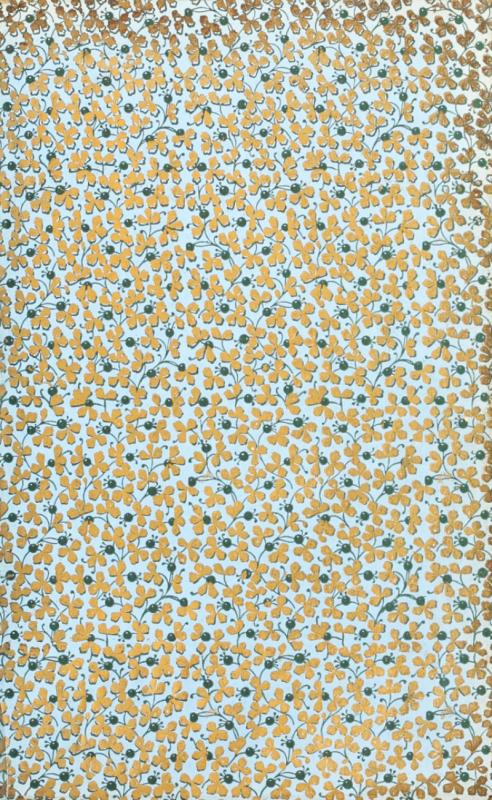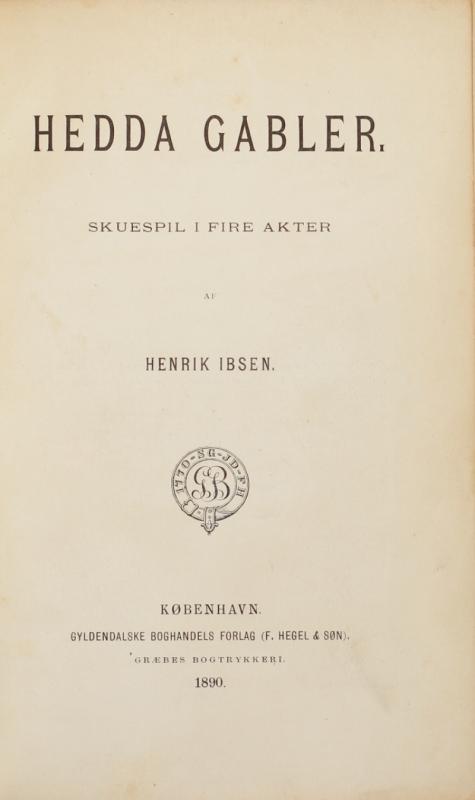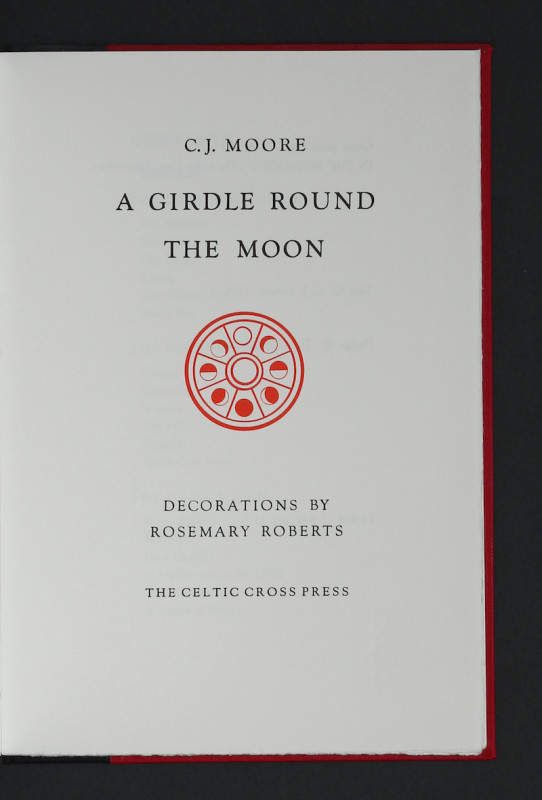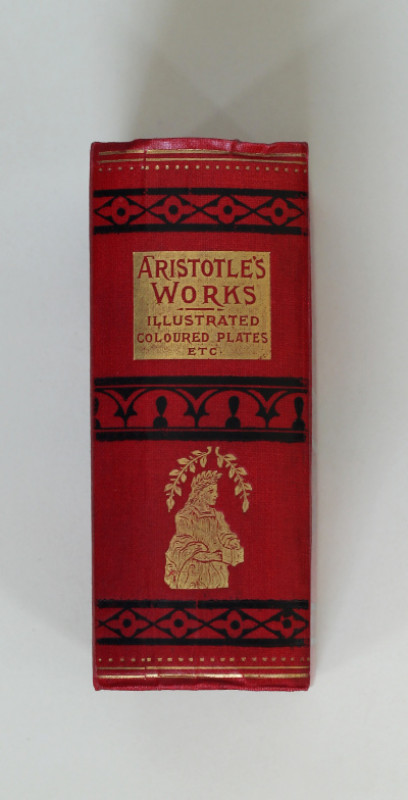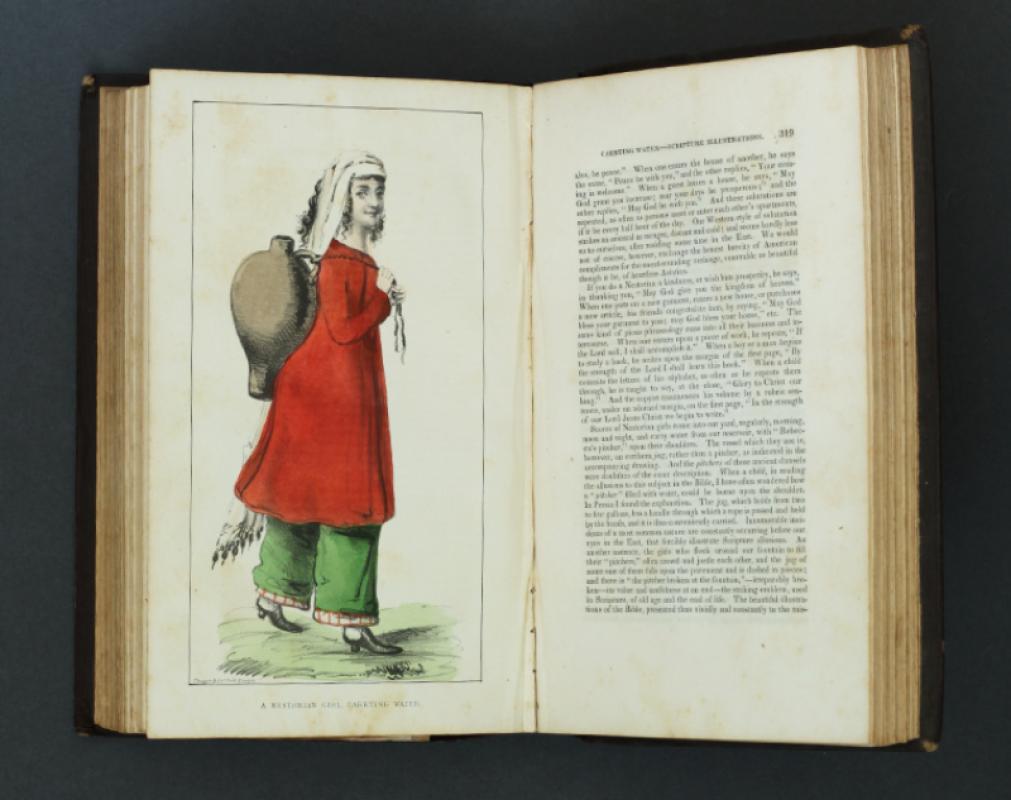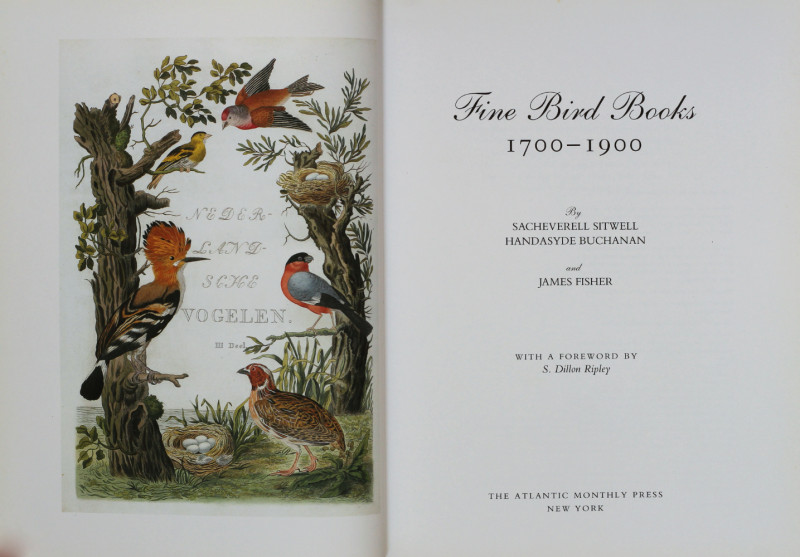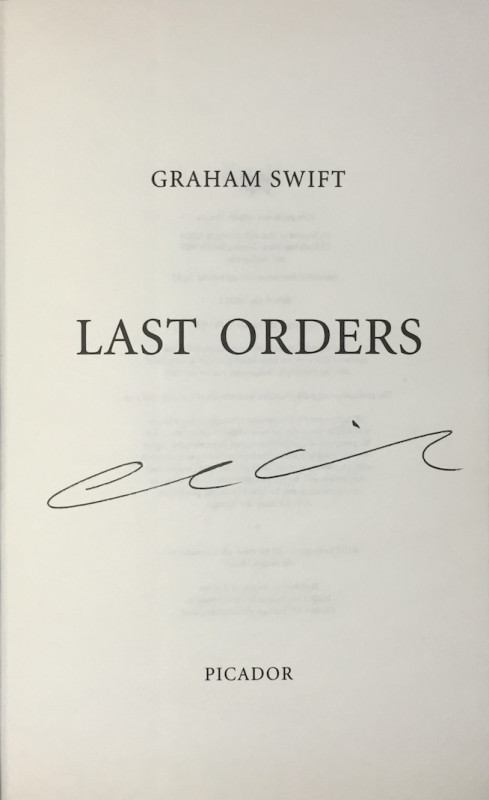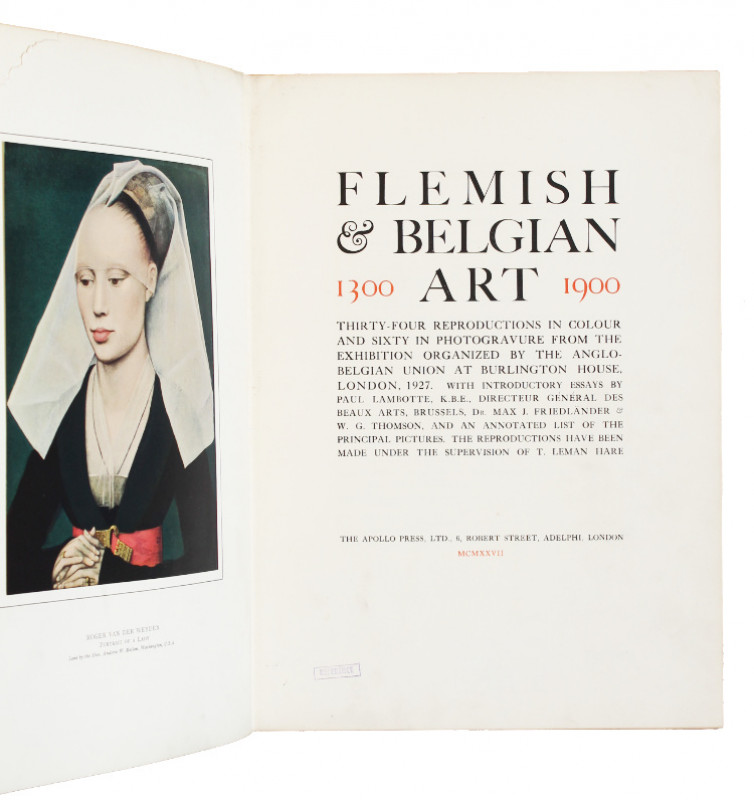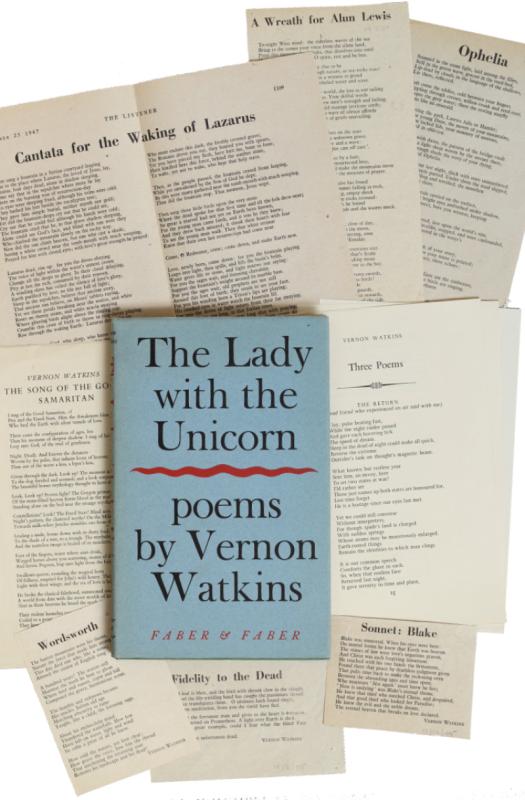Hedda Gabler. Skuespil i fire akter
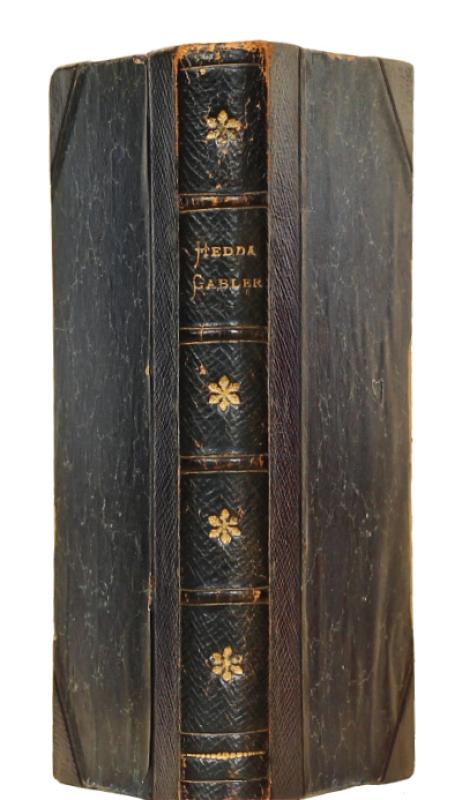



Book Description
THE FIRST EDITION (BAR AN EDITION OF 12 COPIES) OF HEDDA GABLER – ‘PERHAPS THE MOST UNIVERSALLY ADMIRED OF IBSEN’S PLAYS’
Octavo (175 x 112mm), pp. [4 (title, copyright notice on verso, fly-title, dramatis personae)], 236. (Occasional light marks or spots, some light browning.) British half hard-grained blue morocco over marbled boards by H.S. Beresford-Webb of c. 1898 with his ticket on the lower pastedown, spine gilt in compartments, lettered directly in one, others decorated with gilt snowflake tools, patterned endpapers printed in blue and gilt, all edges stained red. (Extremities rubbed causing superficial losses, corners slightly bumped.) A very good copy. ¶¶
Provenance: Henry Seymour Beresford-Webb, 1898 (1851-c. 1911, ownership inscription on front free endpaper, occasional pencilled annotations or markings, date [?of reading] ‘21/3/98’ in pencil on lower margin of final page). ¶¶
Octavo (175 x 112mm), pp. [4 (title, copyright notice on verso, fly-title, dramatis personae)], 236. (Occasional light marks or spots, some light browning.) British half hard-grained blue morocco over marbled boards by H.S. Beresford-Webb of c. 1898 with his ticket on the lower pastedown, spine gilt in compartments, lettered directly in one, others decorated with gilt snowflake tools, patterned endpapers printed in blue and gilt, all edges stained red. (Extremities rubbed causing superficial losses, corners slightly bumped.) A very good copy. ¶¶
Provenance: Henry Seymour Beresford-Webb, 1898 (1851-c. 1911, ownership inscription on front free endpaper, occasional pencilled annotations or markings, date [?of reading] ‘21/3/98’ in pencil on lower margin of final page). ¶¶
Dealer Notes
Second edition, published five days after the edition of twelve copies printed in London to establish copyright. Ibsen (1828-1906) had risen to international prominence as a playwright in the 1860s with Brand (1866) and Peer Gynt (1867), and his reputation as a leading figure in European literature and drama was well established when he began to write Hedda Gabler. Ibsen was working on his new play in the spring of 1890 (and may have been planning it in late 1889), but progress on the work, provisionally titled Hedda, was slow through the summer and autumn of 1889. By 16 November 1890, however, the final draft, now titled Hedda Gabler, had been completed. Interest in Ibsen’s work in Britain had grown significantly during the previous years – due particularly to the proselytising support of George Bernard Shaw, Edmund Gosse, and William Archer – and the publisher William Heinemann offered Ibsen £150 for the rights of Hedda Gabler, ‘provided the proof-sheets could be sent direct from [Ibsen’s publisher] Gyldendal to Edmund Gosse (who was to translate it) as they came off the press’ (M. Meyer, Henrik Ibsen (London, 1967-1971), III, pp. 155-156). Ibsen happily accepted the offer, but to ‘secure his copyright Heinemann, then only twenty-seven and in his first year as a publisher, issued an edition of twelve copies of the play in Norwegian on 11 December [1890]’ (op. cit., III, p. 156) – the first printing of the play. The present edition was then published by Gyldendal, Ibsen’s primary publisher, on 16 December 1890 in an edition of 10,000 copies. ¶¶
In the meantime, the first stage production of Hedda Gabler was being prepared. The first performance was at the Residenztheater in Munich, the city which had been the playwright’s principal residence since 1875, on 31 January 1891. This was followed by performances in Helsinki, Berlin, Stockholm, Oslo, Gothenburg, and London in the first six months of 1891, but the critical and public reception of both the printed and performed play were mixed. For example, the first performance in London took place on 20 April 1891 at the Vaudeville Theatre, ‘thanks to the enthusiasm of two American actresses resident there, both ardent feminists, Elizabeth Robins and Marion Lea’ and ‘[s]uch unkind comments as had been passed on the play by the Scandinavian and German critics paled before the abuse poured forth by the English press’, with Clement Scott of The Daily Telegraph exclaiming ‘What a horrible story! What a hideous play!’ (op. cit., III, p. 178). ¶¶
However, George Bernard Shaw wrote to Robins after attending the premiere that ‘I never had a more tremendous sensation in a theatre than that which began when everyone saw that the pistol shot was coming at the end. [...] [Y]ou were sympathetically unsympathetic, which was the exact solution of the central difficulty of playing Hedda’ (D.H. Laurence (ed.), Bernard Shaw. Collected Letters 1874-1897 (London, 1965), p. 292). Oscar Wilde wrote to Robins that her performance was ‘a real masterpiece of art’ (M. Holland and R. Hart-Davis (ed.), The Complete Letters of Oscar Wilde (London, 2000), p. 477). The play became better understood and appreciated through the subsequent decades, and writing in 1971, Meyer judged that ‘Hedda Gabler is, today, perhaps the most universally admired of Ibsen’s plays, the most frequently performed (in England, at any rate), and certainly one of the easiest for an average audience to appreciate’ (op. cit., III, pp. 158-159). ¶¶
This copy is from the library of the schoolmaster H.S. Beresford-Webb, who had served as Assistant Master at Wellington College and was the author of a number of schoolbooks intended for students of German. The bookbinding, which is executed to a professional standard, was his own work and bears his binder’s ticket ‘Bound by / H.S.B.W.’ on the lower pastedown. ¶¶
O. Anker (ed.) Minneutstilling Henrik Ibsen 23. mai 1956, 555-556; J. Carter and P.H. Muir (eds), Printing and the Mind of Man, 375; J.B. Halvorsen, Bibliografiske oplysninger til Henrik Ibsens Samlede vaerker, p. 102; H. Pettersen, Bibliotheca Norvegica. Bind IV: Norske forfattere efter 1814, 6480. ¶¶
Order this book from our website (www.TypeAndForme.com) - or contact us for any enquiries.
In the meantime, the first stage production of Hedda Gabler was being prepared. The first performance was at the Residenztheater in Munich, the city which had been the playwright’s principal residence since 1875, on 31 January 1891. This was followed by performances in Helsinki, Berlin, Stockholm, Oslo, Gothenburg, and London in the first six months of 1891, but the critical and public reception of both the printed and performed play were mixed. For example, the first performance in London took place on 20 April 1891 at the Vaudeville Theatre, ‘thanks to the enthusiasm of two American actresses resident there, both ardent feminists, Elizabeth Robins and Marion Lea’ and ‘[s]uch unkind comments as had been passed on the play by the Scandinavian and German critics paled before the abuse poured forth by the English press’, with Clement Scott of The Daily Telegraph exclaiming ‘What a horrible story! What a hideous play!’ (op. cit., III, p. 178). ¶¶
However, George Bernard Shaw wrote to Robins after attending the premiere that ‘I never had a more tremendous sensation in a theatre than that which began when everyone saw that the pistol shot was coming at the end. [...] [Y]ou were sympathetically unsympathetic, which was the exact solution of the central difficulty of playing Hedda’ (D.H. Laurence (ed.), Bernard Shaw. Collected Letters 1874-1897 (London, 1965), p. 292). Oscar Wilde wrote to Robins that her performance was ‘a real masterpiece of art’ (M. Holland and R. Hart-Davis (ed.), The Complete Letters of Oscar Wilde (London, 2000), p. 477). The play became better understood and appreciated through the subsequent decades, and writing in 1971, Meyer judged that ‘Hedda Gabler is, today, perhaps the most universally admired of Ibsen’s plays, the most frequently performed (in England, at any rate), and certainly one of the easiest for an average audience to appreciate’ (op. cit., III, pp. 158-159). ¶¶
This copy is from the library of the schoolmaster H.S. Beresford-Webb, who had served as Assistant Master at Wellington College and was the author of a number of schoolbooks intended for students of German. The bookbinding, which is executed to a professional standard, was his own work and bears his binder’s ticket ‘Bound by / H.S.B.W.’ on the lower pastedown. ¶¶
O. Anker (ed.) Minneutstilling Henrik Ibsen 23. mai 1956, 555-556; J. Carter and P.H. Muir (eds), Printing and the Mind of Man, 375; J.B. Halvorsen, Bibliografiske oplysninger til Henrik Ibsens Samlede vaerker, p. 102; H. Pettersen, Bibliotheca Norvegica. Bind IV: Norske forfattere efter 1814, 6480. ¶¶
Order this book from our website (www.TypeAndForme.com) - or contact us for any enquiries.
Author
IBSEN, Henrik
Date
1890
Publisher
Copenhagen: Græbes Bogtrykkeri for Gyldendalske Boghandels Forlag (F. Hegel & Søn)
Friends of the PBFA
For £10 get free entry to our fairs, updates from the PBFA and more.
Please email info@pbfa.org for more information
